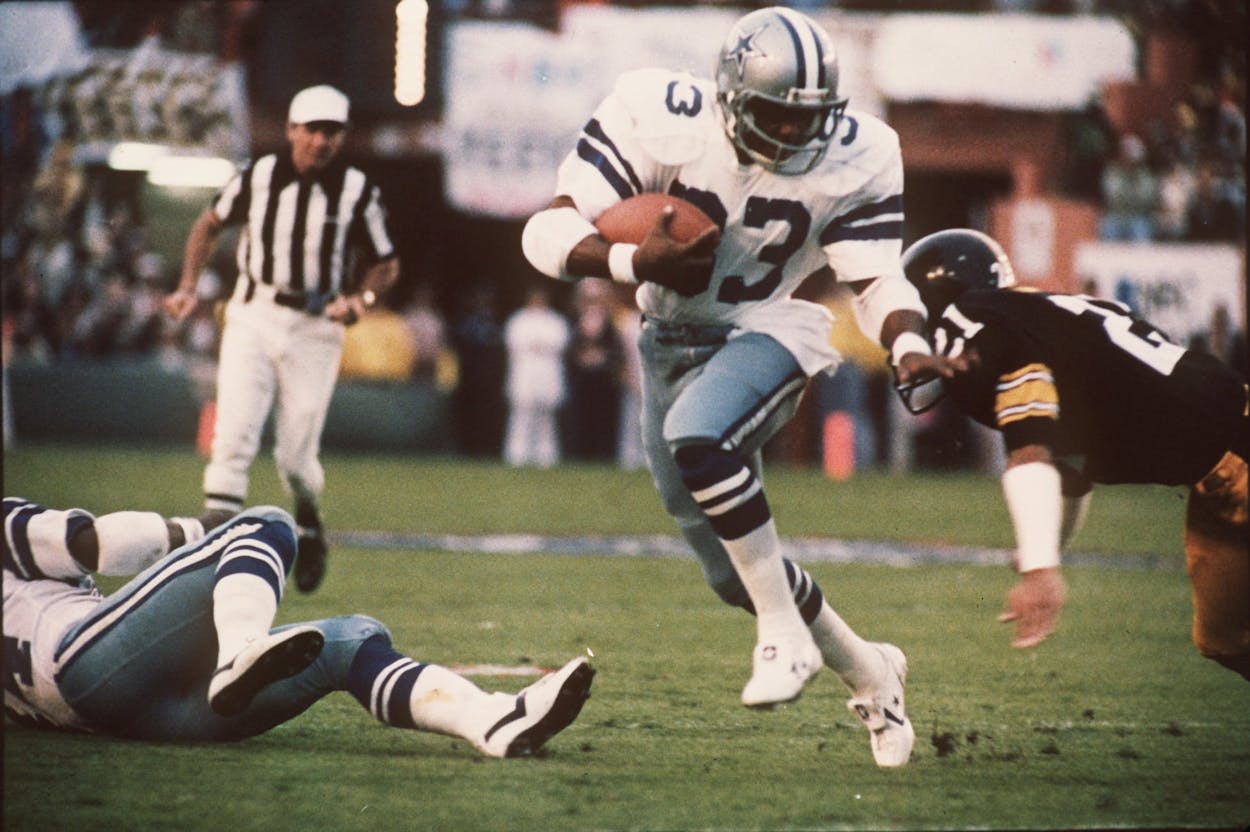Last Monday, a round table discussion on concussions held by the U.S. House of Representatives’ Committee on Energy and Commerce took place in Washington, D.C. During this beltway rendezvous, Jeff Miller, the NFL’s senior vice president for health and safety, was asked by Illinois Representative Jan Schakowsky if he thinks there is a link between football and degenerative brain diseases such as chronic traumatic encephalopathy (CTE).
Miller didn’t give the typical aloof and evasive response: “The answer to that question is certainly, yes.” But this week, Dallas Cowboys owner Jerry Jones said during press conference that’s it’s “absurd” to establish a link between CTE and football, and that “there’s no data that in any way creates a knowledge.” Basically, he’s saying that we need more proof that abnormally strong men hurling themselves at one another could possibly cause brain disease like CTE, a condition once nicknamed “punch drunk” because of its prevalence in retired boxers.
So it looks like Jerry Jones is a brain-injury truther, and yet, there’s a lot of research out there. We actually don’t have to look much further than Cowboys legend and NFL Hall of Famer Tony Dorsett for some evidence.
Two years ago, D Magazine, published a profile on Dorsett and his deteriorating mind. Physically, Dorsett is fine. A good deal of NFL players can’t say that for themselves. They ache and feel pain throughout their bodies for the rest of their lives. Not, Tony. Mentally, however, Dorsett isn’t in the best shape. He’s short tempered and has to separate himself from his family to “chill” over things most would consider banal and inconsequential. On top of his short temper, Dorsett has to write everything down thanks to his fading memory. These symptoms can easily be chalked up to old age, but they’re also signs of a degenerative brain disorder (CTE symptoms often include memory loss, erratic behavior, and in very severe cases can lead to suicide). A few years back, as the piece mentions, researchers at UCLA put Dorsett and three other former NFL players through three months of tests. The results of the tests determined all of these these players had signs of CTE.
There are two particularly striking parts of the Dorsett story. One occurs when he’s on the plane to Los Angeles to get his brain examined by scientists at UCLA, but forgets why and where he was flying. The other occurs when Dorsett says the NFL kept the dangers of brain trauma quiet and essentially forgot about or ignored players retired players who experienced health problems:
“I’m a Hall of Famer,” he says. “I’m one of the most visible guys during my era. And nobody’s reached out to me. Nobody from the NFL has even checked, even asked a question to me. ‘Hey, man, I’m sorry’ or ‘Hey, man, I wish you well’—whatever. ‘Man, is there anything we can do to help you?’ You know, because sometimes—I go to doctors and I can’t remember the doctors’ names.”
The thing about CTE, where Jones is sort of, kind of right, is that the only way to definitively and assuredly diagnose a person with the disease is by examining brain tissue, which can only happen after the person is dead. Science doesn’t have the technology to do this to the living, yet. Technology does, however, allow us to get a pretty solid idea of the symptoms.
But Jones’s response was a little too dismissive. It’s not “absurd” to consider that CTE might develop in former NFL players; in fact, there’s pretty substantial evidence to back the theory up. A study of 91 deceased NFL players found that 87 of them (95.6 percent!) tested positive for CTE. There’s a wide array of research—films, books, journalism, scientific studies—linking CTE and football. Being able to test for CTE on living humans wouldn’t be some grand step towards finding out if there is a link between football, but rather a way to aid in diagnosing the disease early. CTE is, after all, a degenerative brain disorder that often doesn’t show its awful symptoms until years and years after trauma occurs.
For decades, the NFL played its part in denying that football can lead to permanent brain damage. Thanks to that deceit and abandoning its alum, the NFL was involved in a class action lawsuit with about 20,000 former players that reached a $1 billion settlement, that’s being appealed by players who are concerned that it doesn’t protect future cases of CTE.
This isn’t the first time that key football figures have tried to downplay football’s harmful consequences. From 1996 to 2001, the NFL collected information to study the effects of concussions on its players. During this time period, 887 concussions were recorded, but, according to the New York Times, at least 100 concussions were missing from the league’s data. A grand total of zero Dallas Cowboy players were included in the data. Troy Aikman had several concussions during that time period. These concussions ultimately led to his retirement. Now, ain’t that something?






